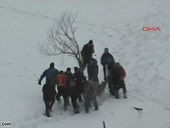OF THE
TIMES
I am suspicious. A lot was going on in that geographic area during those early centuries that form part of the 'dark ages'. In the same way that...
[Link] Astaghfirullah. SubhanaantaAllah. Alhamdulilah. Salaam/Peace/Shalom
I wonder if the boys that have sex with their teachers get Straight A's? as a reward.
"Parsi also claims to have heard from a Western-friendly "senior Global South diplomat" that "whatever agonizing claim the US had to lead a...
Their spelling is wrong. Shouldn't it be attack'ems ?
To submit an article for publication, see our Submission Guidelines
Reader comments do not necessarily reflect the views of the volunteers, editors, and directors of SOTT.net or the Quantum Future Group.
Some icons on this site were created by: Afterglow, Aha-Soft, AntialiasFactory, artdesigner.lv, Artura, DailyOverview, Everaldo, GraphicsFuel, IconFactory, Iconka, IconShock, Icons-Land, i-love-icons, KDE-look.org, Klukeart, mugenb16, Map Icons Collection, PetshopBoxStudio, VisualPharm, wbeiruti, WebIconset
Powered by PikaJS 🐁 and In·Site
Original content © 2002-2024 by Sott.net/Signs of the Times. See: FAIR USE NOTICE

Reader Comments
to our Newsletter